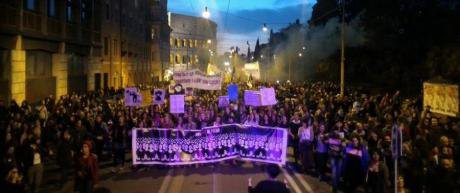
The demonstration against violence against women in Rome November 25th 2016.
Women in Latin America established November 25th as an international day to challenge violence against women in 1981: the date commemorates the assassination of the Mirabal sisters by the government of the Dominican Republic in 1960. Simultaneously the first Women's Global Leadership Institute in 1991, coordinated by the Center for Women's Global Leadership at Rutgers University, brought together activists from across the globe. Together they expanded the idea to 16 days of action, beginning on November 25th and ending on December 10th - World Human Rights Day. This linkage was one element in what would become an astonishingly successful campaign to locate violence against women within human rights thinking, policy and practice. Now, with that connection widely accepted, it is difficult to call to mind what a challenge this was to traditional human rights thinking, understood as protecting people from the powers of the state. What feminists demanded was that the UN and states recognise that for women their rights to bodily integrity and life were most often violated in the private sphere, and that states were systematically failing to protect them. The first 16 days campaign launched a global petition to recognise women’s rights as human rights, with VAW a key focus. The target was the United Nations World Conference on Human Rights in Vienna in 1993. The global coalition was so effective that the historic Declaration on the Elimination of Violence Against Women was adopted by the UN at that meeting. The UN itself recognised November 25th in 1999, and this year called on member states to ‘turn the world orange’.
2016 is the 25th anniversary of the 16 Days. Globally thousands of meetings, marches and cultural events have been organised, only some of which are recorded here. Perhaps the most stunning was in Italy where women’s organisations mobilised 200,000 people to march in Rome, a historic event largely unmarked by the international media.
An issue of contention is the renaming of 25th November as ‘White Ribbon Day’ by men’s organisations which support the ambition to end violence against women. The White Ribbon campaign began in Canada in 1991 in response to the murder of 14 female engineering students by Marc Lepine in 1989. Bizarrely in Canada December 6th is now the national day of action and remembrance of violence against women. This renaming, seen by some as a form of appropriation, has taken strongest hold in Australia, with ongoing debates between White Ribbon and feminist organisations supporting survivors.
The series of articles published on openDemocracy 50.50 this year sought to do four things: to reflect the range of forms and contexts of violence against women; to re-centre the voices of survivors; to bring diverse voices; and to explore current debates.
Too often we conflate forms and contexts of violence: rape is rape, murder is murder. But the contexts in which such violence takes place make a difference to how it is framed and responded to. Guilaine Kinuani challenged the ways in which sexual abuse of African women and girls has been minimised through the weasel words of ‘transactional sex’. November 25th was chosen to recognise three women who were killed for their politics, part of what Rashida Manjoo, the former special rapporteur for the UN on violence against women, has called gender related killings of women. Two pieces explore this from different places and spaces: the UK and Mexico and Guatemala. Both demand that we think beyond the recognised killings by current and ex male partners, to recognise a wider range of contexts in which women’s lives are devalued and worth less than those of men. The value of women lives is at its lowest when there is impunity, when states care so little that the murders are not even investigated. Another conducive context for violence against women are honour codes: here the more familiar context of South Asian communities in the UK is paralleled by that of mafia networks in Italy.
The positioning of survivors has changed markedly since the 1970s, when campaigners used an inclusive ‘we’: we women who had experienced violence and we women who were part of the movement resisting it. Four decades later professionalisation within, and state funding for, support services has resulted in survivors being re-positioned as victims, dissipating much of the vitality of the movement. In several pieces women write as survivors and resisters, creators of innovative work and campaigns. Movements against violence against women are replete with survivors, each one so much more than what was done to her. Re-centering survivors questions the damage discourse which sits underneath all those images of women with bruises or curled up in corners: survivors turn nightmare lessons into energy, energy to resist, to create and build organisations and a different world. Another part of reclaiming our herstory involves celebrates key role lesbians have played in building and sustaining end violence against women movements.
Campaigns are the ways feminists seek to create change. The online Ending Victim Blame has provided a space in which survivors can not only share their stories but also activate others to protest victim blame in the media and wider culture. The basic human rights responsibility is to protect women and girls from violence, and two current campaigns highlight the institutional responsibilities of schools and universities to address sexual harassment and sexual assault. Success is not always forthcoming, but Turkish women effectively challenged attempts to create impunity for child sexual abusers and it took Chinese women over a decade to attain a law on domestic violence.
That the movement is global necessitates hearing diverse voices, seeking out and working with women whose first language is not English, but who can speak about/from their specific location. An intersectional feminism raises complex questions about the privilege of voice, who gets to speak, write and be heard. This series has included inviting contributions from women unused to writing for publication, but who had something important to say.
The field of violence against women has, and continues to be, an argumentative space. We do not always agree about the direction of travel, or even about what words we should use. We stand on the shoulders of those who first named forms of violence, gave them social existence and recognition. But as we learn more, listen louder to women’s accounts, there may be more accurate, experiential ways to encompass the range of intrusive experiences women experience in public space. Prostitution has been one of arenas where disagreement is most evident in recent years, where we need to ask deep and searching questions. Similarly the practice of self-defence has been hotly debated, but feminist activists have drawn on it to assert their right to make political protest for over a century, and recent research suggests it offers something important to women and girls.
The 16 Days offer an opportunity to reflect, to be inspired and moved by women who have survived, our tireless campaigners and re-sisters.
Read more articles on openDemocracy in this year's 16 Days: Activism Against Gender-Based Violence. Commissioning Editor: Liz Kelly
Read more
Get our weekly email
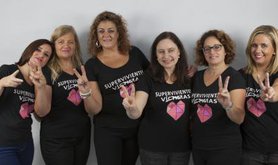


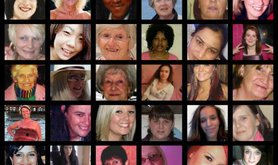


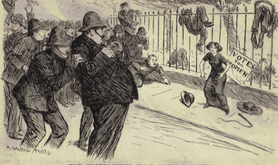
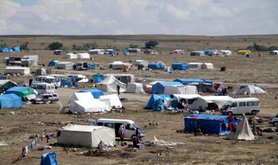



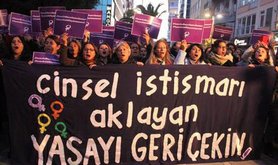


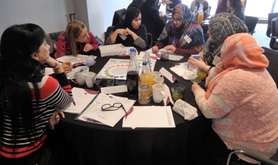

Comments
We encourage anyone to comment, please consult the oD commenting guidelines if you have any questions.